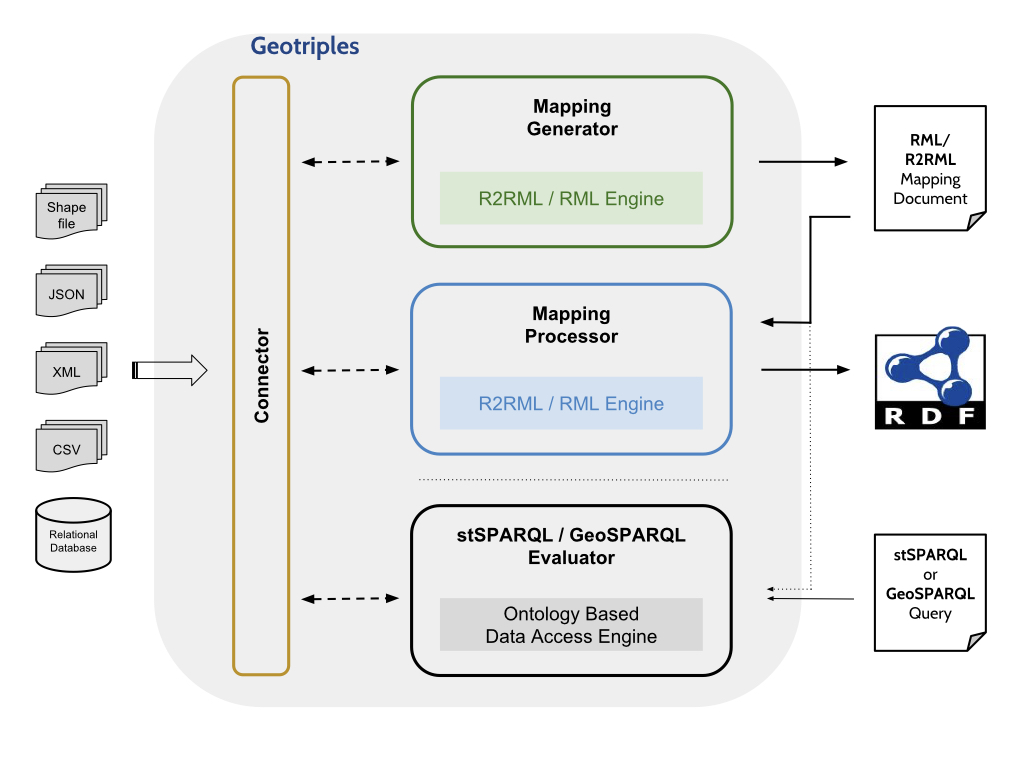About GeoTriples
Goal
GeoTriples is a tool for transforming geospatial data from their original formats (e.g., shapefiles or spatially-enabled relational databases) into RDF. The following input formats are supported: spatially-enabled relational databases (PostGIS and MonetDB), ESRI shapefiles and XML, GML, KML, JSON, GeoJSON and CSV documents.
Architecture
GeoTriples comprises two main components: the mapping generator and the R2RML/RML mapping processor. The mapping generator takes as input a geospatial data source (e.g., a shapefile) and creates automatically an R2RML or RML mapping that can transform the input into an RDF graph which uses the GeoSPARQL vocabulary. The user may edit the generated R2RML/RML mapping document to comply with her requirements (e.g., use a vocabulary different than the one of GeoSPARQL). Then, the mapping processor executes the R2RML/RML mappings to produce the output geospatial RDF graph. The mapping processor of GeoTriples comes in two forms: a single-node implementation and an implementation that uses Apache Hadoop for dealing with big geospatial data. The second implementation can be found here.
It is often the case in applications that relevant geospatial data is stored in spatially-enabled relational databases (e.g., PostGIS) or files (e.g., shapefiles), and its owners do not want to explicitly transform it into linked data. For example, this might be because these data sources get frequently updated and/or are very large. If this is the case, GeoTriples is still very useful. GeoTriples users can use the generated mappings in the system Ontop-spatial to view their data sources virtually as linked data. Ontop-spatial is a geospatial Ontology-Based Data Access system which performs on-the-fly GeoSPARQL-to-SQL translation over spatially-enabled relational databases using ontologies and mappings.
